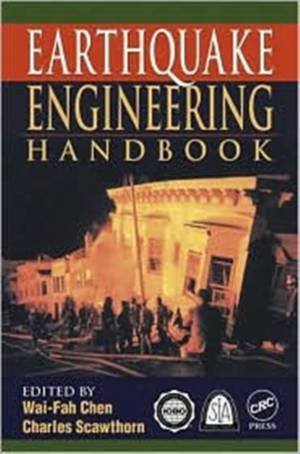
Je cadeautjes zeker op tijd in huis hebben voor de feestdagen? Kom langs in onze winkels en vind het perfecte geschenk!
- Afhalen na 1 uur in een winkel met voorraad
- Gratis thuislevering in België vanaf € 30
- Ruim aanbod met 7 miljoen producten
Je cadeautjes zeker op tijd in huis hebben voor de feestdagen? Kom langs in onze winkels en vind het perfecte geschenk!
- Afhalen na 1 uur in een winkel met voorraad
- Gratis thuislevering in België vanaf € 30
- Ruim aanbod met 7 miljoen producten
Zoeken
Earthquake Engineering Handbook
€ 378,45
+ 756 punten
Omschrijving
Earthquakes are nearly unique among natural phenomena - they affect virtually everything within a region, from massive buildings and bridges, down to the furnishings within a home. Successful earthquake engineering therefore requires a broad background in subjects, ranging from the geologic causes and effects of earthquakes to understanding the impact of these effects on foundations, buildings, structures, the infrastructure, and even their social and economic impact. The Earthquake Engineering Handbook is a comprehensive resource that covers the spectrum of topics relevant to designing for and mitigating earthquakes. In it, international experts present engineering practices, research, and developments in North America, Europe, and the Pacific Rim countries. The emphasis is on professional applications, with discussion ranging from basic dynamics and geoscience to new technologies intended to avoid rather than resist the forces of earthquakes. Covering both traditional and innovative practices, the Earthquake Engineering Handbook is the first professional reference that brings together all of earthquake engineering's many facets. Formulas, tables, and illustrations give immediate answers to questions arising in practice, and summaries of the essential elements of each topic paint a global picture from which readers can develop understanding and the ability to think beyond the results presented.
Specificaties
Betrokkenen
- Uitgeverij:
Inhoud
- Aantal bladzijden:
- 1506
- Taal:
- Engels
- Reeks:
- Reeksnummer:
- nr. 24
Eigenschappen
- Productcode (EAN):
- 9780849300684
- Verschijningsdatum:
- 27/09/2002
- Uitvoering:
- Hardcover
- Formaat:
- Genaaid
- Afmetingen:
- 197 mm x 248 mm
- Gewicht:
- 2848 g

Alleen bij Standaard Boekhandel
+ 756 punten op je klantenkaart van Standaard Boekhandel
Beoordelingen
We publiceren alleen reviews die voldoen aan de voorwaarden voor reviews. Bekijk onze voorwaarden voor reviews.








